When we were invited through the Portuguese Tourist Board to visit the Palace of Sao Miguel during our stay in Evora we were not sure what to expect. Our guide book didn’t mention the palace and we couldn’t find much online about it either. Little did we know what a treat lay in store for us.
Antonio Moreira of the Eugenio de Almeida Foundation met us and told us briefly about the foundation, the ethos of which is to promote and develop the region in cultural, educational, social and spiritual fields. He then introduced us to our guide, Andreza Sousa who was to take us round the beautiful palace.

It has a long history having been built in the Roman-Visigoth period, later becoming a Moorish castle, a royal palace and seat of a military order. Catherine of Braganza (well-known to the British as the wife of Charles II) had also lived there. It was purchased in 1957 by Vasco de Almeida who spent fifteen years restoring the palace. At this time it was home to fifteen families who had to be relocated at De Almeida’s expense and the old photograph in the entrance hall shows the state of the property at that time: the beautiful Manueline-Mudejar windows were hidden behind a modern facade, the loggia was enclosed, the gardens were overgrown and chickens roamed amongst the washing hung out to dry – a far cry from the way the palace looks today!
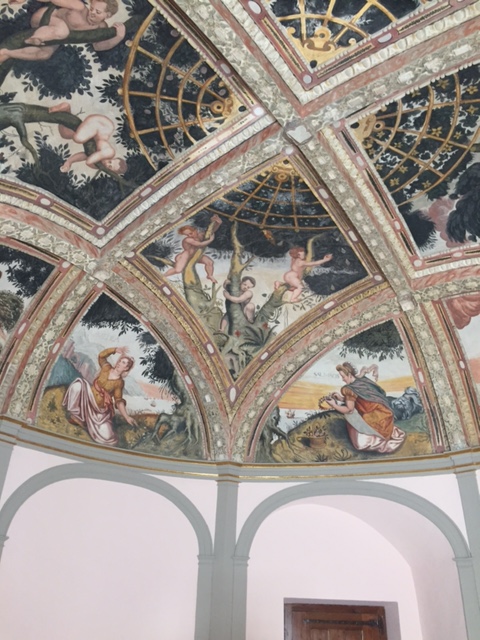
We swiftly ran out of superlatives as Andreza took us round the palace and explained in a really engaging fashion the detail of what we were looking at. The Room of Love, the Room of the Virtues and the Dining room had the most beautiful 16th century frescoes on the ceilings, the first by a Flemish artist, the others by a British artist. The frescoes had been commissioned by the Counts of Basto but four hundred years later required no restoration work, just a gentle clean and were in superb condition. It would have been very easy just to admire them and walk on but Andreza picked out various details in each room and explained the background, for instance the frescoes in the Room of Love, inspired by Ovid’s Metamorphoses, in particular the story of Danae seduced by Zeus in the form of a golden shower and the significance of the two peacocks, the crane and the snake in the Room of the Virtues.
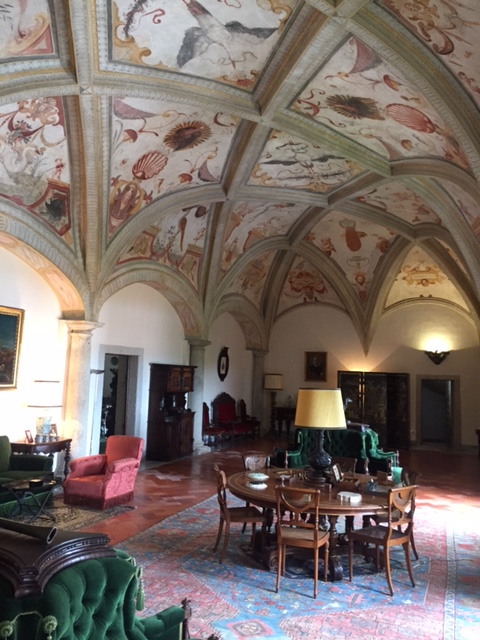
As we walked through the palace Andreza not only pointed out individual items of interest, all of which had come from the De Almeida family’s palace in Lisbon but also told us the history of the family and its wealth.
There was beauty everywhere we looked but particular favourites were the tapestry carpet in the dining room which had been made in a nearby village, the conversation seat in one of the upstairs rooms, the Chinese screen in the Room of the Virtues and the tiles in the kitchen.
As for a favourite space I think I would be hard pressed to choose between the Room of the Virtues and the outside loggia which had been used recently by the Portuguese President to receive the President of Chile. The gardens too were impressive having been replanted as they would have been historically with flower borders, herbs (some of which would have been used for medicinal purposes) and orange trees.

At the end of our tour Andreza offered to show us some outdoor frescoes at the Casas Pintadas which we would love to have seen but sadly we had to check out of our hotel and time was ticking. On the positive side, this does give us a good reason to return to Evora in the future!
Tours with Andreza or the other English-speaking guide are available by prior appointment only.
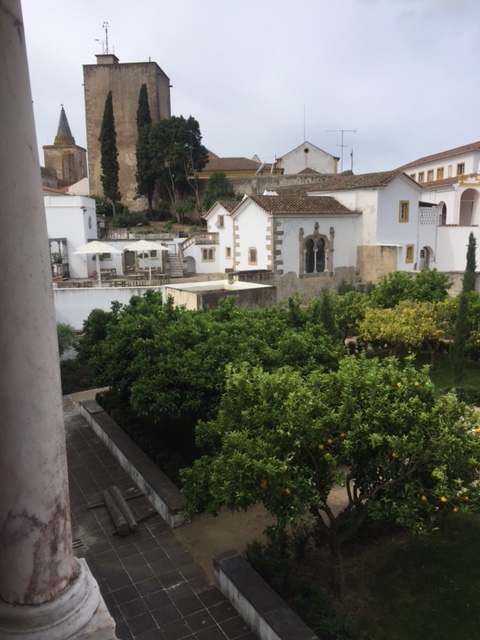
Thanks to Turismo de Portugal for organising our visit for us.
Categories: Travel Tips

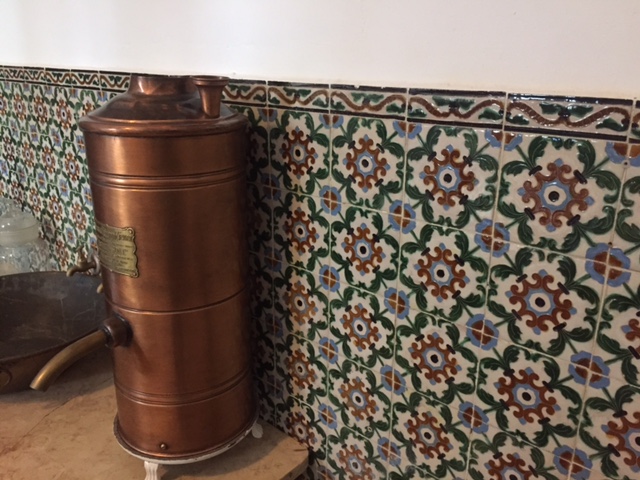
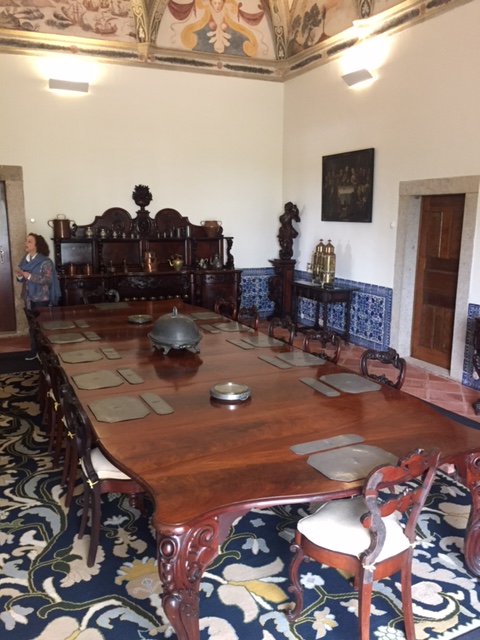
1 reply »